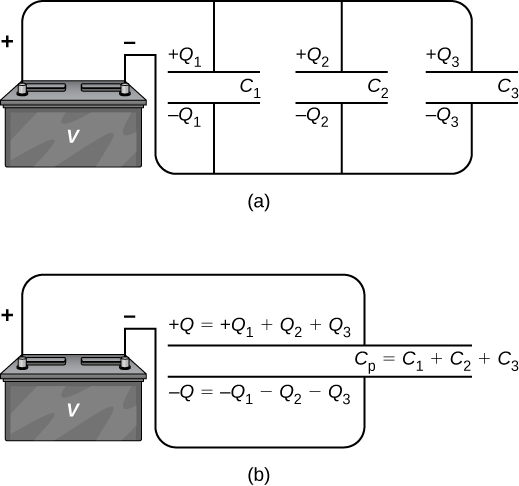| << Chapter < Page | Chapter >> Page > |
Potential V is measured across an equivalent capacitor that holds charge Q and has an equivalent capacitance . Entering the expressions for , , and , we get
Canceling the charge Q , we obtain an expression containing the equivalent capacitance, , of three capacitors connected in series:
This expression can be generalized to any number of capacitors in a series network.
For capacitors connected in a series combination , the reciprocal of the equivalent capacitance is the sum of reciprocals of individual capacitances:
Now we invert this result and obtain
A parallel combination of three capacitors, with one plate of each capacitor connected to one side of the circuit and the other plate connected to the other side, is illustrated in [link] (a). Since the capacitors are connected in parallel, they all have the same voltage V across their plates . However, each capacitor in the parallel network may store a different charge. To find the equivalent capacitance of the parallel network, we note that the total charge Q stored by the network is the sum of all the individual charges:
On the left-hand side of this equation, we use the relation , which holds for the entire network. On the right-hand side of the equation, we use the relations and for the three capacitors in the network. In this way we obtain
This equation, when simplified, is the expression for the equivalent capacitance of the parallel network of three capacitors:
This expression is easily generalized to any number of capacitors connected in parallel in the network.
For capacitors connected in a parallel combination , the equivalent (net) capacitance is the sum of all individual capacitances in the network,


Notification Switch
Would you like to follow the 'University physics volume 2' conversation and receive update notifications?